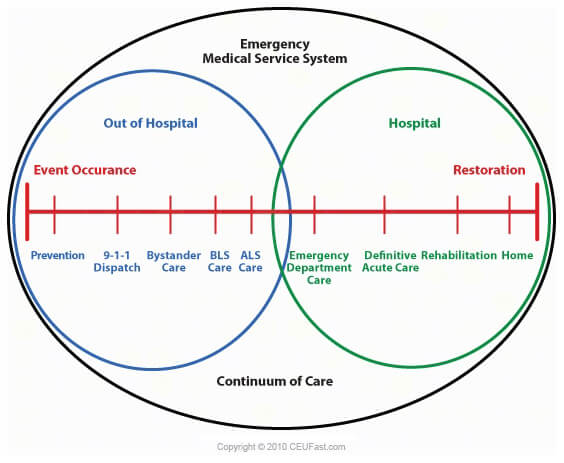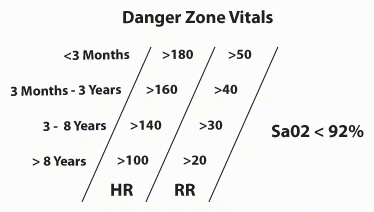Triage begins with a general assessment of the patient. The nurse must look at the patient and take note of the patient's condition as he or she approaches the triage desk. For example, the method of movement, noting whether the patient is ambulatory and how the gait is, also not whether the patient is using an assistive device, is the patient in a wheelchair, is the patient alone, or with a crowd must be considered in the general assessment. The most important question to consider is: does the patient look sick.
Three other aspects of triage include obtaining a good history of the patient's presenting symptoms, obtaining a good medical history of the patient, and completing an assessment that is based on the presenting complaint. After the history and assessment have been completed, the triage nurse can make a disposition decision.
While completing the history, the triage nurse should determine if the patient has any allergies to drugs or foods. Make sure to ask about the onset of symptoms. Ask female patients about their menstrual cycle.
Assessing whether or not the patient is in distress is a significant part of triage. Many families wish to do all the talking for the patient. Having the patient answer the questions allows the triage nurse to determine if the patient is able to speak in complete sentences as well as assess his or her cognitive level.
When performing the triage assessment, the triage nurse must actually lay hands on the patient and perform a quick head to toe assessment while focusing on the presenting complaint. Much information can be obtained when executing the triage assessment in this manner. For example, touching the patient tells the nurse the temperature of the skin, the moisture of the skin, the regularity or irregularity of the pulse, and the status of skin tenting. The quick head to toe assessment in the process of performing the focused assessment also tells the nurse if there are signs of abuse or neglect and other problems that could be associated with the primary complaint.
Example: The 30-year-old female that arrives in triage with a chief complaint of abdominal pain must be assumed to be pregnant until proven otherwise. She has bruises in various stages of healing and is accompanied by her boyfriend. At this point it would be imperative to separate the girlfriend and boyfriend to determine if the bruises were a result of abuse by the boyfriend. It must be assumed that she would not discuss the abuse if the boyfriend were present in the room. If abuse is suspected by the nurse, or abuse is reported by the patient, the nurse is obligated to report this. Each ED should have policies and procedures in place for whom to contact when these situations occur.
All patients must be screened for abuse and neglect. Hovering family members often times makes this a difficult assessment to make. Many triage nurses feel uncomfortable asking patient's family members to step outside for a few minutes, and these nurses often have a level of discomfort asking the patient if he/she feels safe in the current living arrangements. These are necessary assessments to make to prevent future occurrences of abuse or neglect. The triage nurse must realize the significance of these questions and treat all the patient's needs.
Screening the patient for signs and symptoms of tuberculosis (TB) occurs in triage to prevent further spread and exposure. Make sure to ask the patient if he/she has had recent unexplained weight loss, night sweats, fever, or coughing.
The focused triage assessment of the presenting complaint must be done by an experienced nurse to help differentiate between possible diagnoses. Bearing in mind that only doctors and midlevel providers have the ability to diagnose illnesses, the experienced triage nurse must be able to anticipate these diagnoses in order to make the proper disposition of the patients.
Regardless of the triage method used by your facility, all patient assessments must include certain key factors such as: onset of symptoms, allergies, associated symptoms, treatment prior to arrival, vital signs, and a description of pain including the PQRLS.
P=Pain
Q=Quality
R=Radiation
L=Location
S=Severity
Two factors to keep in mind when triaging patients: all chest pain is considered cardiac until proven otherwise and all women of child bearing age are considered pregnant until proven otherwise.
Once the initial triage assessment is completed and the disposition decision is complete, the triage nurse must monitor those patients sent to the waiting room. These patients will need reassessment during their stay in the waiting room. The acuity of the patient's in the waiting area can change, and the acuity level must be advanced based on the reassessment by the triage nurse.





